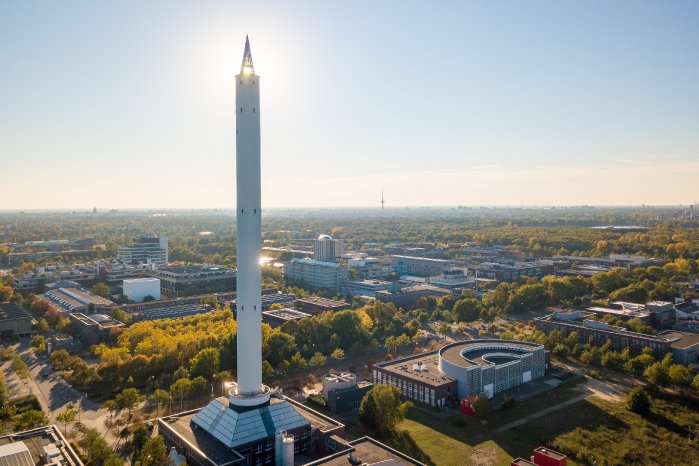The Bremen Drop Tower allows scientists from around the world to conduct research in microgravity without the costly and time-consuming use of rockets or satellites. 10,000 successful experiments prove that ZARM has been creating highly professional research conditions for more than 30 years. ZARM Director Professor Marc Avila points out: "We have reached an impressive milestone: this success is not only the result of outstanding technology, but also reflects the commitment and expertise of our team. We are proud to make our laboratories accessible to the international scientific community, enabling groundbreaking discoveries and helping to shape the future of space exploration.”
Oxygen for survival in space
The 10,000th experiment in the Drop Tower carries an artificial photosynthesis experiment by ZARM scientist Dr. Katharina Brinkert, whose research project is funded by the German Aerospace Center (DLR). The experiment examines how magnetism can be used to separate oxygen bubbles from water in weightlessness. Brinkert is one of many scientists who regularly use the Bremen Drop Tower for their research. "How can oxygen, hydrogen and other chemicals be produced sustainably in microgravity, and how can we benefit from this here on Earth? These are key questions to us," says Brinkert.
The challenges of a long-duration space mission are numerous, and not just in terms of building a high-performance spacecraft. A significant part of exploration research is working on the development of reliable, efficient and sustainable life support systems. Space lacks almost everything that humans need to survive and take for granted on Earth. We could try to bring enough oxygen, energy, and food which we need to survive from Earth, but the energy and transportation costs increase significantly with every ounce we have to carry.
Current systems, such as the one on the ISS, produce oxygen using a water electrolyzer which is powered by electricity generated by solar panels. This consumes about a third of the total energy used by the life-support and control systems. These devices are very large, heavy - and prone to failure. ZARM is now investigating photoelectrochemical (PEC) devices that can produce oxygen through artificial photosynthesis using direct sunlight. This saves energy. The devices are also smaller and lighter, and their design takes into account the fact that components can be produced locally in an emergency, for example from Martian soil. In addition to oxygen, they can produce hydrogen, fuels, fertilizers, medicines and other chemicals – ideal for use in space.
Sustainable hydrogen production on Earth
Although Brinkert's team is developing PEC devices primarily for space missions, they can also be used on Earth for the new green energy transition – and even more easily than in microgravity. "It is clear that preparations for space missions and the green energy transition on Earth face similar challenges: we need to produce fuels more sustainably and use them more efficiently," says Brinkert.
The conditions under which the devices must operate vary greatly depending on where they are used. On the Moon, solar radiation is much stronger due to its proximity to the Sun. On Mars, additional devices are needed to concentrate the solar radiation in order to operate the PEC systems efficiently. In a current Nature Communications article, Brinkert's team presents the first-ever framework for evaluating the efficiency of PEC devices at different locations in space.
Further Information
Publication „Nature Communications“
YouTube-Interview with Katharina Brinkert
ZARM Website:
Open Day: https://www.zarm.uni-bremen.de/de/presse/einzelansicht/article/open-zarm-the-bremen-drop-tower-opens-its-doors.html
Artificial Photosynthesis: https://www.zarm.uni-bremen.de/de/forschung/explorationsforschung/photoelectrocatalysis.html
and: https://up2date.uni-bremen.de/en/article/breathing-in-space-artificial-photosynthesis-as-a-key-technology


